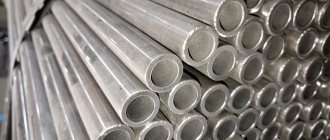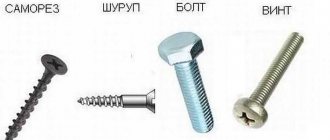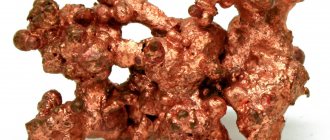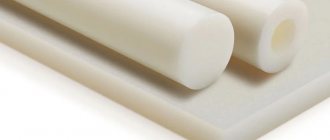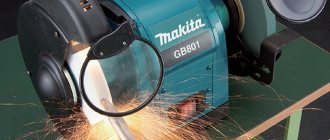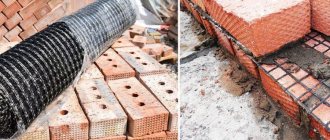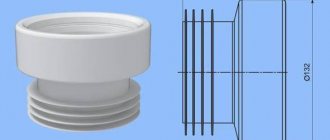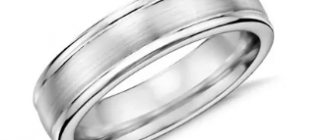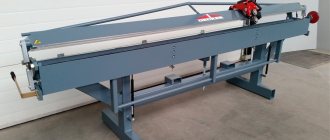Types of fluoroplastic
Several main brands of fluoropolymers are used, differing in the chemical structure of the polymer macromolecules and properties.
Below are the most popular types of fluoroplastic and their main features. Fluoroplastic-2 (PVDF, chemical name - polyvinylene fluoride). It has good strength, elasticity and high chemical resistance. A crystallizing material with a melting point from 135 to 180 degrees C and a glass transition temperature from minus 42 to minus 25 degrees C.
Fluoroplastic-3 (chemical name - polytrifluorochloroethylene). It has good strength and hardness, has the basic characteristics of a thermoplastic - it quite easily transforms into a highly elastic state, melts and is molded when heated. At the same time, it has good resistance to low temperatures.
Fluoroplastic-4 (chemical name - polytetrafluoroethylene). The most famous of fluoroplastics. It has the highest density among the group of fluoropolymers under consideration. F-4 is resistant to high temperatures up to 260 degrees C. Also fluoropaste-4 and its modifications F-4PN, F-4O, F-4D, etc. have excellent hydrophobicity and low porosity.
Fluoroplastic-30 (ECTFE, PE-CTFE, E-CTFE, E/CTFE, copolymer of trifluoroethylene and ethylene). A crystallizing material with a melting point of about 240 degrees C. Its characteristics resemble F-3.
Fluoroplastic-40 (ETFE, E/TFE, copolymer of tetrafluoroethylene and ethylene). According to its data, it is similar to fluoroplastic-4. The material is resistant to chemicals, including strong ones, resistant to ultraviolet radiation, and non-flammable.
About fluoroplastics
Fluoroplastics (fluoropomers, fluorolones) is the general technical name for fluorine-containing polymers.
Such plastics are one of the most unique polymer materials, products from which are found in industry, in everyday life, and in other most unexpected places. There is a wide variety of fluorine-containing polymers, but for simplicity, the general name “fluoroplastic” is used. Most often, this group of polymers, due to their some valuable properties, is used as a sealing material, raw material for the manufacture of structural parts, and also for producing non-stick coatings. Fluoroplastics, as a rule, have a wide range of operating temperatures; some brands can be used from minus 269 degrees C to 260 degrees C, that is, the range of application exceeds 500 degrees. Depending on the brand, fluoroplastics have a density from slightly below 2000 kg/cub.m to 2400 kg/cub.m, which is quite high values for plastics.
Fig.1. Typical fluoroplastic products.
The physical, mechanical, chemical and other characteristics of the material in question are usually much higher than those of large-scale polymers. This fact allows the use of fluoroplastics in chemical, medical and other highly responsible fields of knowledge and industry. Processing of such polymers is usually carried out either mechanically using various processing equipment or by pressing. The processing methods most commonly used for other polymers, such as injection molding, extrusion or blow molding, are used extremely rarely for fluoroplastics due to their special properties, only for certain suitable brands.
PTFE is used to produce products and semi-finished products that are completely different in appearance and properties. The material itself can appear in the form of ordinary-looking plastic, hard plastic, rubber-like elastomer, etc.
Progress and industry
Plexiglas: types, application, properties and characteristics
Currently, the density, weight of fluoroplastic, its resistance to aggressive factors, and safety for humans have made this material absolutely indispensable for industry and everyday life. The average person rarely thinks about what most of the equipment around him is made of, but Teflon was the raw material. Thus, in electronics, the density of fluoroplastic has made it the optimal material for constructing high-quality equipment. In addition, this material has the ability to block current, which makes its field of application even wider. Teflon can be used in wiring work, in the design of capacitors and other parts of electronic systems, including those of very high complexity, as well as those that require increased durability and reliability.
If you pay attention to modern medical devices, you will notice that fluoroplastic is used very actively here too. In particular, it serves as a material for the production of implants and is widely used by dentists
PTFE is also indispensable for ophthalmologists. It is this substance that is used in the manufacturing of pacemakers and blood vessels for implantation into the human body. Fluoroplastic is completely safe for humans, which makes the possibilities for its use so wide.
Features of application
Nowadays, fluoroplastic is actively used in a variety of industries and spheres of human life. As studies conducted several years ago showed, almost half of all fluoroplastic produced by industry is consumed in the food and chemical industries. About 15% is used for the manufacture of electrical goods, another five percent goes into the medical field. Up to a quarter of all fluoroplastic produced is used for the construction of transport, military and nuclear facilities, and about 10% of the produced compound is used for domestic use.
As we found out during numerous tests, fluoroplastic is safe for living organisms, so you can safely allow this compound to come into contact with food and water intended for drinking. Fluoroplastic is not a source of harm. Even if this compound ends up in the human body, in general there will be no serious harm, although, of course, there are situations when working with fluoroplastic is associated with increased danger. As a rule, this characterizes situations when the melting point of fluoroplastic is exceeded and the compound transforms into a hot liquid form. However, this is typical only for production processes that involve the use of specialized equipment, and only personnel who have undergone special training are allowed to work with fluoroplastic.
Read also: Diamond cutters for engravers
Comparison of fluoroplastic and caprolon
Polyurethane: characteristics, application and prices
Caprolon, or polyamide-6, is similar in characteristics to fluoroplastic. The difference between caprolon and fluoroplastic is in the mechanical properties, but it is impossible to definitively answer which is stronger - fluoroplastic or caprolon. The latter is a little harder, less deformed and damaged under equal loads. But at the same time, its wear resistance during long-term use is lower than that of fluoroplastic.
The production of parts from caprolon requires higher precision, but technologically it is easier and cheaper to make a part from it by casting than by pressing and baking from fluoroplastic.
The melting temperatures of caprolon and fluoroplastic are almost twice as different. The first one melts at 220 °C, and for the second one this is the operating temperature.
If long-term operation with small mechanical loads is required, it is advisable to install a fluoroplastic part; if the mechanical loads are significant, then caprolon is better than fluoroplastic. When comparing which is better - fluoroplastic and caprolon, when manufacturing bushings, the parameters of manufacturability and strength are taken into account.
PTFE bushings are made to tolerance, a little larger in external size and slightly smaller in internal size, by pressing the shaft into it. When a shock load is applied to the shaft, the bushing loses its shape and must be replaced.
Caprolon bushings are rigid, withstand shock loads perfectly, do not lose their shape, but wear out quickly. Precision manufacturing accuracy and additional shock absorption of the assembly are required.
Replacing fluoroplastic
High characteristics make it difficult to replace fluoroplastic with other materials. You can decide what to replace fluoroplastic with due to limitations in the operational parameters of the unit. For example, low operating temperatures make it possible to replace fluoroplastic with caprolon without loss of reliability. Imported material TECAPET (polyethylene terephthalate) has recently appeared on the market, replacing caprolon. It is not yet produced in Russia.
Characteristics of individual indicators
Pof film, properties, advantages, application
When studying fluoroplastic, you should pay special attention to such indicators. 1
The dielectric constant. This is one of the important characteristics of fluoroplastic. The surface resistivity of the material is 1017 Ohm
It is important that this indicator does not depend on temperature fluctuations. Therefore, the material is actively used in the designs of radar stations and other types of electronic equipment.
1. Dielectric constant. This is one of the important characteristics of fluoroplastic. The surface resistivity of the material is 1017 Ohm
It is important that this indicator does not depend on temperature fluctuations. Therefore, the material is actively used in the designs of radar stations and other types of electronic equipment.
2. Flammability of the substance. It should be noted an interesting manifestation of fluoroplastic as a combustible material. It can conditionally be called a non-flammable substance, but when interacting with oxygen, fluoroplastic ignites, and there is no significant release of heat.
It should be taken into account that at temperatures above 773 °K (more than 500 °C), the combustion process of the substance is accompanied by the release of poisonous fluorphosgene gas. This substance, when it comes into contact with mucous membranes, causes severe chemical burns, which is especially dangerous for the upper respiratory tract. However, the danger of such processes can be minimized if the substance is heated in a vacuum.
3. Density of the substance. Fluoroplastic has the highest substance density among polymers. This figure ranges from 2.17 to 2.26 g/cm3. This feature of fluoroplastic has endowed it with good flexibility for processing. The material is amenable to all known processing methods - drilling, milling, turning and others.
Density also has a positive effect on tensile strength. This figure is 200 kg/cm2. Even when protective films are made from fluoroplastic, they can withstand significant impact.
4. Resistance to temperature influences. The operating temperature range is quite high. The maximum temperature of use (+ 260 °C) is limited not by a loss of strength, but only by a decrease in some physical and chemical properties, for example, wear resistance. The lower temperature limit is minus 269 °C. The coefficient of friction of parts containing fluoroplastic practically does not change when working in any weather conditions.
5. Chemical resistance. The most understandable example of the inertness of this polymer can be its stability when immersed in “aqua regia,” which is capable of dissolving almost all known substances. Among the substances that react chemically with fluoroplastic are fluorine chloride and some other solutions. The material can be considered harmless both biologically and physiologically.
Fluoroplastic also combines other, less noticeable advantages. For example, the material practically does not absorb water from the environment. If necessary, the material can be endowed with some special properties by introducing the necessary additives. For example, fluoroplastic-4D has good ductility.
As is already known, fluoroplastic is endowed with the ability to provide little resistance during friction of parts. Moreover, this quality remains unchanged with temperature changes. Therefore, using it, a wide variety of engine parts and other moving mechanisms are manufactured.
Advantages and disadvantages
Polymer material containing fluorine has many advantages. It is superior to various types of polymers in physical and chemical properties, as well as technical characteristics. Fluoroplastic has the following properties:
- biological inertness;
- small porosity;
- low level of adhesion;
- low friction coefficient;
- low water absorption rates;
- fire resistance;
- resistance to chemicals;
- High electrical strength;
- dielectric characteristics;
- stability when changing temperatures.
Since fluoroplastic has many positive characteristics, it can be considered a high-quality and universal material. It lends itself well to drilling, grinding and other processing methods.
But fluorine-containing polymer has features that limit its scope of application and create some inconvenience when working with it. Teflon has a low degree of wear resistance. When heated above 300 degrees, the material releases volatile components that have a harmful effect on living organisms. In addition, fluoroplastic is characterized by high cold fluidity, which is why it is rarely used in electronics. And due to adhesive passivity, Teflon elements cannot be glued to each other.
We recommend: Waste hazard classes: online calculation programs
Safety precautions when processing fluoroplastic-4MB
Studies of the thermal destruction of F-4MB at a temperature range of 300-350oC using the vapor-phase analysis method, carried out at ONPO "Plastpolymer", showed that the main components of destruction released in the specified temperature range are the original monomers TFE and HFP. Other components, including perfluorocyclobutane, are released in small quantities and after 30 min of heating the sample, they practically cease to be released.
In accordance with the legislation in force in Russia, workers and engineers working with fluoropolymer melts are entitled to a reduced working day and additional annual paid leave.
The safety data sheet for chemical products for fluoroplastic-4MB according to GOST 30333-2007, made by fluoroplastic developers, can be requested through the feedback form.
Recrystallization
As already mentioned, one of the disadvantages that fluoroplastic has (the technical characteristics of which are generally good) is a fairly high degree of cold fluidity. In practice, this is expressed in a change in the shape of products made from it under increased pressure. If they are used at not too high temperatures - from +80 to +100 degrees C, the load on them should not be more than 10 kg/m2. With greater pressure, noticeable deformations will remain on the product. As the temperature increases, the load should also decrease.
Under strong pressure (100-200 kg/m2), a sample made of fluoroplastic can be crushed into a plate with a decrease in thickness by 3-5 times, depending on the temperature. When this material is deformed, it usually does not crack or cause any other damage.
In the table below you can see what technical characteristics fluoroplastic has in this regard (compression under certain loads).
| Temperature (C) | Load kgf/cm2 | Deformation degree (%) | Coefficient | |
| 1 day | 4 days | |||
| 20 | 33 | 6.00 | 6.25 | 0.03 |
| 20 | 21 | 3.05 | 3.19 | 0.032 |
Photoroplast can be used for the manufacture of parts used at pressures greater than 30 kg/m2. However, in this case, the design of the interface nodes in the product should be as tight as possible. The presence of cavities or significant gaps in it is not allowed. In this case, the fluoroplastic will simply have nowhere to leak. The fluoroplastic material is not very elastic. Therefore, in order to achieve a tight fit, rubber is added to it during production. Sometimes special spring compensators are also used at junction points.
Polymer release forms
Teflon is produced in two forms - in the form of blanks and finished products. Blanks can be considered semi-finished products used for further technological processes. Their size must correspond to the nomenclature list of the manufacturing organization or documents agreed upon between the manufacturer and the customer. Billets, which are of the highest or first grade, are produced in the form of:
- Sheets and plates. Products come in rectangular or square shapes ranging in size from 10x10 cm to 100x100 cm. The thickness of the polymer plates varies from 1 to 60 mm. During the production of elements, sheets are subjected to mechanical processing.
- Films. They are used in the production of cables, capacitors, filters and other products. The thickness of the material ranges from 1 to 10 cm, and the width is up to 30 cm.
- Rods and discs. The rods are made with a diameter ranging from 1-30 cm and a height from 5 to 200 cm. The parts are used to create anti-friction, sealing and electrical insulating products for technological equipment.
- Bruskov. The length of the parts is 7-30 cm, width - 4-20 cm, and thickness - 2-200 mm.
- Powder or shavings.
We recommend: Classification of medical waste in medical organizations
Finished products are represented by disks, tapes, tubes, and bundles. They are immediately used in the form of components for mechanisms, equipment, and fittings. During production, not only standard dimensions can be used, but also customer drawings.
Fluorine-containing polymers of domestic and foreign production can be purchased both from the manufacturers themselves and through various intermediary organizations. Some of them are distributors that focus on a single brand, or large suppliers that work with several manufacturing companies to make it easier and faster for customers to find the right product.
Over the short period of its existence, fluoroplastic has been able to replace many materials that were once used in certain fields of activity. With the successful implementation of the latest technologies, it was possible to significantly improve the quality characteristics of various products.
Brands and technical characteristics of fluoroplastic
Today there are several brands of fluoroplastic, which differ in molecular sizes and their number. Let's look at the most popular brands and their technical characteristics:
- Fluoroplast-2 (polyvinylene fluoride) has high strength and elasticity and can withstand the action of aggressive chemicals. Most often used in pipelines and for the manufacture of containers for storing chemicals. There are modifications of the material with the addition of other substances, then the letter M is present in the marking.
- Fluoroplastic-3 (polytrifluorochloroethylene) is characterized by high strength and hardness; it melts well at high temperatures, softens, and changes shape; on the contrary, it is resistant to low temperatures. Used as part of anti-corrosion coatings. There is a modified fluoroplastic-3 labeled F-3M.
- Fluorolast-4 (polytetrafluoroethylene) has the highest density among other fluoroplastics, is resistant to high temperatures (withstands heating up to 260 degrees), is highly hydrophobic and has low porosity. Today, there are several varieties of fluoroplastic-4, for example, F-4PN, F-4O, F-4D and others. All of them have distinctive properties that determine their use in one area or another.
- Fluoroplast-40 is similar in properties to F-4, is resistant to aggressive chemicals, does not transmit UV rays, and is not flammable. It is produced in two types - F-40P and F-40Sh.
The main technical characteristics of the listed fluoroplastic materials are presented in the table.
| Technical characteristics of fluoroplastic | ||||
| Material name | Density, kg/m3 | Use temperature, Cº | Specific resistance, Ohm*m | Tensile, MPa |
| Ftoroplast-2 | 1 780 | – 45/+150 | 1 010 – 1 013 | 44 – 55 |
| Ftoroplast-3 | 2 090 – 2 160 | – 195/+190 | 1 015 – 1 017 | 35 – 43 |
| Ftoroplast-4 | 2 150 – 2 240 | – 260/+160 | 1 017 – 1 018 | 16 – 35 |
| Ftoroplast-40 | 1 700 | – 200/+200 | 1 016 | 27 – 50 |
In Russia, fluoroplastics have been produced in large quantities at chemical plants for many years. The scope of application of polymers is extremely wide and is determined by their technical characteristics. The material has a number of exceptional properties, thanks to which it is in demand in a variety of industries, and the need for it has only increased in recent years, and accordingly, the share of its production in the country’s chemical industry has also increased.
A little history
The discoverer of Teflon is the American scientist Roy Plunkett, who in 1938, while an employee of Kinetic Chemicals, witnessed the polymerization of gaseous tetrafluoroethylene and its transformation into a solid substance resembling paraffin. The resulting material exhibited properties that were amazing at that time, so it was immediately registered as a development by Kinetic Chemicals, which became part of the DuPont Corporation in 1949.
Teflon first came to the Soviet Union during the Second World War. The Teflon ring was part of the design of the turret rotation system for American-made tanks that came to the USSR under Lend-Lease. Soviet designers were impressed by the fact that a fluoroplastic gasket was used instead of lubricant to rotate the turret of a foreign tank. After reviewing the technical characteristics of the material, it was decided to set up our own production. For a long time, the use of fluoroplastic in industry, as well as the technology of its production in the Soviet Union, were classified.
Scope of application
It is difficult to name an area where fluoroplastic is not used in one form or another. It is widely used in energy, automotive and mechanical engineering, construction, medicine and the food industry. The excellent consumer properties of the material and affordable price have made it so in demand.
Mechanical engineering
The material, touching the surface, forms a thin film, which significantly reduces friction. This property of the polymer is used in connecting units and bearings of various designs; due to this property, it is often included in lubricants.
Medicine
Fluoroplastic is absolutely safe for humans; moreover, it is perfectly compatible with human tissues and does not cause immunological reactions. Due to this, it is used for the production of prosthetics. It is widely used in medical fields such as dentistry and cardiovascular surgery. Artificial heart valves and blood vessels are produced from this polymer. Fluoroplast-4 replaced titanium, which was previously used for the manufacture of prostheses. Every year the possibilities of its use in medicine are only growing.
Food industry
The most well-known use of fluoroplastic-4 in the food industry is non-stick cookware, which at one time made a splash in the consumer goods market. However, this is not the only use of Teflon in the food industry. In the production of sunflower oil, milk and other liquid food products, the polymer is used to coat pipes and pumps for the distillation of liquids.
Chemical production
In chemical production, the material is used for the manufacture of containers and pipelines through which aggressive chemical solutions are distilled. Its resistance to various chemicals is also used in reactors, in the production of laboratory glassware and in the transport of various liquids.
Electrical engineering
Here the material is used as a dielectric in the production of various cables, coils, circuit boards and capacitors. PTFE insulation also protects against exposure to chemicals, which is why the resulting products are often used in hazardous industries.
Construction
Teflon plates are used in the construction of bridge structures, galleries and overpasses. Teflon gaskets are used in the construction of foundations of structures in seismically hazardous areas; due to the excellent characteristics of Teflon, free movement of the elements of the base of the building is ensured.
Light industry
In light industry, the material is used in the production of fabrics with water-repellent properties. High-tech clothing made from synthetic fabrics reliably protects from rain and wind. Many modern brands producing clothing for sports and outdoor activities use fabrics with Teflon. In addition, its water-repellent properties are used in the production of shoes.
The introduction of modern technologies into life allows us to improve the quality and reduce the cost of things. Fluoroplastic was able to replace a lot of less advanced and more expensive materials. Its unique properties provide a wide range of applications for the polymer. The emergence of new modified fluoroplastics makes it possible to expand the boundaries of its use. The physical properties of the material are constantly improving, and new possibilities for its use are opening up.
It is safe to say that fluoroplastic and its derivatives will be used for many years to come, new materials based on it will appear that will have even more amazing technical and chemical properties, and the scope of application of Teflon will only expand.
Application
The properties of fluoroplastic described above have made them irreplaceable materials for many industries and applications. The global production and use of fluorinated plastics, semi-finished products and products made from them is constantly growing, and the number of types of applications is increasing.
PTFE is used to produce, among other things, a wide range of products with special properties, for example:
— products that can withstand radiation exposure for a long time;
— extra-strength fibers, which in some respects exceed the strength properties of analogues made from high-alloy steels;
— coatings with high corrosion resistance, almost impenetrable to water and other corrosive agents and atmospheric factors;
— films with frost resistance and dielectric characteristics unattainable for other plastics and non-polymer materials;
— rubbers for use in critical conditions.
Fig.2. FUM tape and thread are the most popular sealing materials
The most common fluoroplastics are used as follows:
Fluoroplast-2 is used, in particular, for the production of pipelines and vessels for storing chemicals. The properties of fluoroplastic-3 make it possible to use it as a component of anti-corrosion coatings. The most common material, fluoroplastic-4, is used in seals, including construction and friction parts, as well as in medicine, pharmaceuticals, energy, machine tool, automobile and aircraft construction. Non-stick coatings made from F-4 called “Teflon” are famous in the food industry (on frying pans and other utensils); in addition, in the same industry it is used for application to pipes and pumps for transporting food liquids.
Ftoroplast-2 (PVDF, PVDF)
The use of “two” in industry stems from several parameters in which this type of fluoroplastic is superior to others:
- high hardness, strength and rigidity (at temperatures up to 120 °C);
- resistance to water, solvents, radiation of any kind;
- biological inertness - does not react with food and living organic material;
- practically non-flammable;
- chemically pure material (there are no impurities that appear during the production of fluoropolymers).
For fluoroplastic-2, the operating temperature is to = 150 °C; melting temperature of fluoroplastic-2 = 170 oC.
It is considered a universal material, used in all areas of activity, subject to limited heating.
Process of creating PVDF
As a result of laboratory research, several technological processes have been developed for the production of fluoroplastic-2. According to the criteria of profitability and yield of the finished product, three chains are used in industry, differing in initiators and cost/quality balance.
Properties of PVDF crystalline phases
Fluoroplastic-2 has four types of crystalline phases that can transform from one to another under external influences:
- α-phase. Formed from a melt without the use of pressure or from other varieties during annealing.
- β-phase. Formed from a melt under a pressure of 350 MPa. It is of particular interest, since in this phase the material exhibits piezo- and pyroelectric effects.
- γ-phase. Formed from a superheated melt. Unstable. Under mechanical influence (deformation of the sample) it passes into the β-phase.
- δ-phase. Formed from the α phase when exposed to an electric field. By annealing a sample in the δ phase, subject to certain conditions, one can obtain any of the other three varieties.
Manufacturers and applications
Currently, fluoroplastic-2 is not produced in Russia. Leading foreign suppliers: Agru (Austria), FIP Spa (Italy), Georg Fischer (Switzerland), Simona (Germany), Glynwed Pipe SYSTEMS LTD.
Pipes and pipeline assemblies (taps, fittings) for pumping aggressive media or for the production of highly pure materials are made from fluoroplastic-2.
Sheet F-2 is used for lining containers and walls of premises.
Finished products made from fluoroplastic-2, as well as rods or sheets, are imported to Russia.
Current Western sanctions have recently reduced purchasing opportunities.
Areas in which fluoroplastic is used
Today, Teflon is used in almost all areas of economic activity. It is actively used in medicine, pharmaceuticals, energy and construction, car and aircraft structures. The use of fluoroplastic is widespread in the food industry. It is used to make fillers for high-temperature membrane filters, heat-resistant gaskets of various types, critical elements of shut-off and control valves, valves and pumping equipment in the chemical industry.
Machines and mechanisms
The structural properties of Teflon are used in the production of vehicles, machines, mechanisms, machine tools and the aviation industry. In units subject to heavy loads, sliding elements and bearings are used, consisting of a metal base coated with Teflon.
During operation of the mechanism, fluoroplastic leaves a thin film on the surface with which it comes into contact, which makes it possible to significantly reduce the coefficient of friction.
For the same reason, finely dispersed fluoroplastic is sometimes added to lubricants. A thin layer of Teflon coating, which forms on the rubbing surfaces of the elements during operation, allows the mechanism to continue working for some time if the lubricant for some reason stops flowing into the system. In addition, Teflon oil seals and sealing elements are a mandatory component of pipelines and high-pressure hydraulic systems in the designs of most machines.
Medicine and pharmaceuticals
Fluoroplastic has good compatibility with the human body, so it is successfully used for the manufacture of prostheses in surgery, cardiology and dentistry. Artificial substitutes for blood vessels and heart valves are made from fluoroplastic. Now Teflon has replaced titanium, the use of which for the manufacture of prosthetics previously imposed a number of restrictions on human life.
Food industry
The use of fluoroplastic in the food industry also deserves attention. It is used as an internal coating of pipelines and gland seals for pumps pumping various raw liquids, such as sunflower oil, lecithin, fat and milk masses.
Non-stick coatings of containers for thermal processing of food products are also made of Teflon.
Tefal cookware with a non-stick surface has become very popular.
Chemistry
In the chemical industry, the use of fluoroplastic is widespread for the manufacture of parts for shut-off and control valves and sealing elements of vessels and pipelines transporting liquid solutions with a high degree of chemical aggression. Due to its ability to withstand the effects of chemically active substances, the material is used in column reactors, extractors and various containers as a lining for surfaces in contact with aggressive environments.
electrical and Electronics
In electrical engineering, instrument making and electronics, fluoroplastic is used as a dielectric. Teflon film is an important component of modern high-quality cable products. PTFE insulating materials are used to produce coils, capacitors and circuit boards. PTFE insulation can withstand high-temperature aggressive environments.
Construction
Fluoroplastic plates are the most important parts of the structures of sliding supports of critical structures, such as bridges, galleries, overpasses, overpasses and other spans. In regions with a high level of seismic activity, Teflon gaskets are used in places where floor beams are supported on columns, as well as in places where columns are installed on foundations in order to ensure the free movement of structural elements of the building frame.
Production of clothing and special types of fabrics
The thinnest film, which is formed during the deformation of Teflon raw materials, serves as a coating for special types of fabric.
This fabric is used for sewing high-tech clothing with water-repellent and windproof properties.
At the same time, the porous material does not delay the natural evaporation of the human body. Most modern sports and outdoor clothing has a thin Teflon coating.
Serious industry and serious materials
Fluoroplastic is actively used in aviation. It is from this that one can create aviation pipelines that encounter increased loads during operation. Through such pipes, liquid is pumped under conditions of very high pressure and also at elevated temperatures. Due to its density and high melting point, fluoroplastic is optimally suited for the construction of such systems.
Fluoroplastic is no less important for the engine industry, as it serves as the raw material for the production of numerous consumables and spare parts. It is from this that, for example, sliding plates mounted for supports are made. PTFE is also indispensable in the production of bearings. The material is often used as a seal when working over joints. Teflon is also optimal as a means to eliminate friction that can destroy a car. Oscillatory movements are smoothed out, and the material of the main structure does not encounter loads - they are completely absorbed by fluoroplastic.
Preparation method
All these varieties are obtained chemically. In essence, they are polymers to which fluorine atoms have been added. Hence their name.
Fluoroplast-4 is synthesized in the form of a white powder, and then pressed and sintered at high temperature. Other grades of this material are usually obtained by hardening.
PTFE is used in the manufacture of many innovative modern products. The technical specifications are truly amazing. The advantages of this material include:
- High chemical resistance. Fluoroplast-4 does not dissolve even when boiled in aqua regia.
- Inertness and low porosity.
- Very low coefficient of friction. This indicator for fluoroplastic remains practically unchanged at any temperature.
- Excellent dielectric properties. This material remains an insulator even at a temperature of 200 degrees.
- Stability. The chemical properties of fluoroplastic-4 do not change at temperatures up to -300 degrees.
- Fire resistance is another advantage of a material such as fluoroplastic. Its characteristics (the heat-resistant polymer is self-extinguishing) make it possible to use it in places with a high fire hazard.
- Gas tightness.
- Biological compatibility. This type of plastic is often used to make dentures.
Properties of fluoroplastic
Fluoroplastics, as mentioned above, can have a wide range of different features and appear both in the form of various types of plastics and in the form of thermoplastic elastomers. In relation to solvents, they can be either soluble or insoluble, swelling or non-swelling polymers.
The use of the materials under consideration is determined by the complex of valuable properties that certain brands possess. Among such useful features of fluoroplastic, it is necessary to note extremely high chemical resistance, heat resistance and frost resistance. In addition, many fluoropolymers have very low coefficients of friction, which is indispensable when used in components and mechanisms, as well as excellent dielectric characteristics under various conditions and very low water absorption.
Fluoroplastics also have a number of disadvantages, including low strength in comparison with engineering or structural thermoplastic polymers, and a high degree of creep of these materials. In addition, we must not forget that the vast majority of fluoropolymers are very expensive.
Marking of sheet composites based on fluoroplastic
Fluoroplastic can be produced both in pure form and in the form of composite materials, which, depending on the composition, can have increased strength characteristics and resistance to mechanical, temperature and radiation effects. Thanks to additives such as coke, molybdenum, and carbon fiber, the possibilities for using fluoroplastic are significantly expanded. PTFE-based composites are marked as follows.
- F4K20 (20% coke). The material is used as gaskets and seals in environments such as hydrocarbon gases and liquids, and solvents.
- F4K15M5 (coke-15%, molybdenum disulfide-5%). The material has increased strength and a reduced coefficient of friction. Used as bearing inserts. Works in environments with wet gases.
- F4S15 (adding 15% fiberglass). It has increased wear resistance and ductility. Works in aggressive dry environments.
- F4UV15 (addition of carbon fiber 15%). It is characterized by increased hardness, elasticity and thermal conductivity.
- >F4K15UV5 (coke-15%, carbon fiber-5%). Material with increased resistance to deforming loads and does not accumulate static charges. Used in friction units without additional lubrication.
- F-4KS2 (cobalt blue-2%). It has a very high degree of wear resistance and is used in moving parts as an anti-friction element. Works in a wide temperature range.
Fluoroplastic: types
Currently, fluoroplastic is a term applied to a group of materials that are somewhat different from each other. Each variety is characteristic of a country where it is mainly produced and used, and has a specific name. For example, Teflon has become widespread in America - this is the so-called fourth fluoroplastic, but the Japanese version is polyphonic. The Italian industry is built using algophone, the English industry uses fluon, and the French industry uses soreflon. In Germany, the material most actively used in industrial processes is called Gostaflon TR.
There is also a third fluoroplastic, which is presented under different names in different countries: in Japan it is known as Daiflon, and in France as Voltalef. American industry uses Kel F. There is also a second fluoroplastic, fluoroplastic-40 and a copolymer based on the combination of vinylidene fluoride and tetrafluoroethylene. On sale it is usually designated as fluoroplastic-42.
Fluoroplastic: combining and separating
Various compounds based on fluoroplastic have received quite extensive use in industrial processes. Most of them are produced as follows: a fluorine-based polymer is taken as a base, and special components are added to it to correct the required qualities. In this way, it is possible to increase density or wear resistance, increase resistance to high and low temperatures, and adjust the elasticity and hardness parameters of the final product.
Fillers can be a variety of components; the main condition is the ability to withstand the temperature at which fluoroplastic is sintered. Currently, it is customary to divide possible fillers into several groups. Metals (copper, nickel, noble silver and a number of other compounds) are widely used. You can introduce minerals into fluoroplastic - kaolin, quartz or ceramic chips. A fairly good result can be achieved by adding organic compounds - soot, coal, coke, graphite. Fillers in the form of a frame or fibers can provide a reinforcing effect. The former are usually crumpled metal mesh or foil, while the latter are represented by non-woven and woven materials. Non-woven - mustaches made of metal, basalt fibers, quartz, asbestos. Woven fluoroplastic fillers - fiberglass, basalt fabric, asbestos, graphite.
